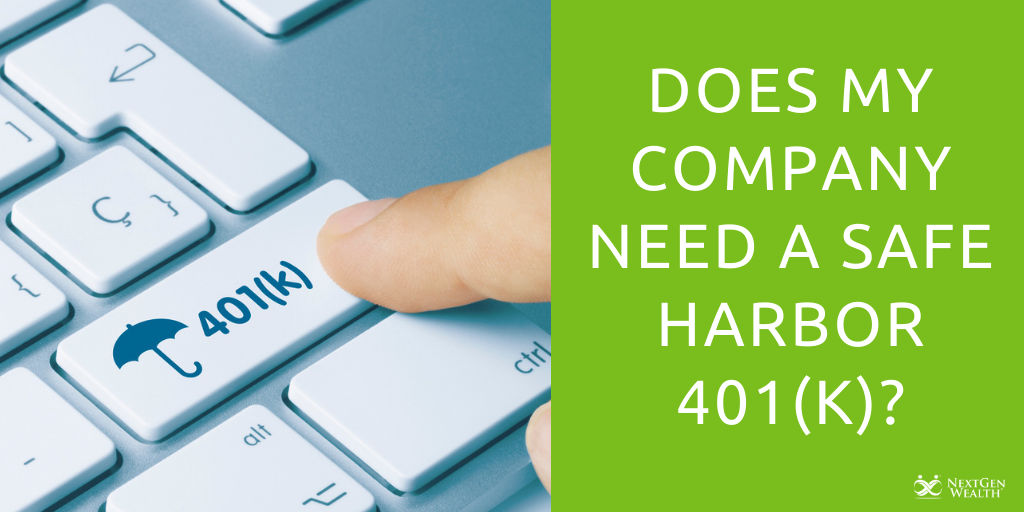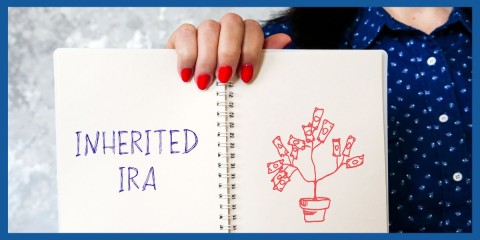Does My Company Need a Safe Harbor 401(k)?
For many workers, the benefits package a company offers is almost as important as the salary that goes along with it. One of the benefits that workers are most interested in is the retirement plan. People want to know that they are going to be okay after they stop working, and in most cases, they are relying on their employer to help make that a reality when it comes to saving. 
Many companies offer retirement plans such as a 401(k). However, these plans can come with bureaucratic red tape and regulatory loopholes to jump through – which can make them more difficult to implement. Because of these difficulties, some companies choose to opt out of plans like 401(k)s altogether.
However, that doesn’t have to be the case. There are other options that can let companies provide benefits without having to worry about some of the regulations that can lead to headaches and nightmares. One of those options is a Safe Harbor 401(k).
What is a Safe Harbor 401(k)?
A Safe Harbor 401(k) is a retirement plan that essentially acts exactly like a regular 401(k) – employees are given the opportunity to contribute a certain amount of their salary to this plan, which then builds up over time until they are ready to retire. Just like a regular 401(k), employers are also able to contribute and match an employee’s contribution up to a certain amount. So, in these respects, there is no difference.
However, that’s where the similarities end. You see, the government has rules in place for standard 401(k)s to make sure that all employees are contributing equally, from the highest paid to the lowest.
While these regulations sound nice and fair, in many companies – especially small to mid-sized ones – this isn’t completely realistic, as the ratio of high-paid employees to lower ones can be skewed. In those cases, it might be difficult for a company to pass the compliance test, which can result in potential fees and censuring.
Safe Harbor 401(k)s are basically a way to bypass those government compliance regulations. By altering how your 401(k) works in a few essential areas, you can basically open it up and allow more freedom for individuals to contribute as they see fit, regardless of how their contributions stack up to others in the same company.
Sounds nice, right? It is, and there are many benefits to this plan. However, as we will see later, there are some drawbacks as well. First, however, let’s talk about what a Safe Harbor 401(k) plan actually is.
Characteristics of a Safe Harbor 401(k)
Based on all this, you might be wondering what, exactly, separates a Safe Harbor 401(k) from a regular 401(k). It basically all boils down to employer and employee contributions. Since the main reason a 401(k) can fail a compliance test has to do with lopsided contributions from employees, a Safe Harbor 401(k) takes that out of the equation by ensuring that all employees get equal matching contributions from their employer. This freedom then allows employees to contribute more than they normally would in a regular 401(k), without the worry of over contributing what is allowed.
This happens by using one of three methods:
Basic Safe Harbor Match: With this first method, the employer marches 100% of the first 3% of an employee’s annual contribution, as well as 50% of the next 2%. For this to work, employees are required to contribute to the 401(k) as well.
Enhance Safe Harbor Match: In this second method, the employer matches 4% of an employee’s contribution. Just like the basic match method, an employee must contribute to the 401(k) before any matching contributions are made.
Non-Elective Safe Harbor: In this method, all employees, regardless of their own contributions, get an automatic employer contribution equal to 3% of their annual salary. Employees might be encouraged to contribute, but they are not required to – yet they still get the benefit of employer contributions to their 401(k).
In addition to these obligatory contributions, another key characteristic of a Safe Harbor 401(k) is vesting. In a regular 401(k), employees often have to work for so many years before they are able to have access to the employer contributions of the 401(k) account they have accrued. With a Safe Harbor 401(k), that is not the case. All contributions are immediately accessible by the employee no matter what.
Benefits of a Safe Harbor 401(k)
So, you might be wondering what the advantage is in having these mandatory contribution laws? Depending on your own situation, there can be many reasons why you might consider this option:
The main reason most companies decide to implement a Safe Harbor 401(k) is that it allows the company to bypass the normal compliance regulations. These regulations can be very constraining and, if you are found to be in violation of them, can be very costly as well. This basically gives you an excuse to sidestep the headache and not even have to worry about it.
Another reason is because Safe Harbor 401(k)s allow all employees to contribute their maximum allowable amount, no matter what. In a regular 401(k), highly compensated employees often have to scale back their own contributions, so they don’t throw off the ratio of who is contributing what. Safe Harbors remove this worry, so their own accounts are able to grow quicker.
Finally, this sort of plan is often seen as a great investment by employees. They are more likely to invest in their own future since they are getting such a great return in the form of matching contributions and no vesting schedule. Even more, prospective employees will see this as a great reason to join your workforce.
Drawbacks of a Safe Harbor 401(k)
As great as this all sounds, there are some drawbacks to this sort of plan as well.
The first is money. While this plan allows you to skip the financial headaches associated with non-compliance issues, it’s easy to see that the employer is being forced to make a match. Depending on the size of your payroll, that can really add up.
Second, to implement a plan, you need to commit to the plan for at least one year. So, if you decide to go for it and then realize it’s not in your company’s best interest, you’re basically stuck for the entire year.
If you decide you don’t want to continue offering a Safe Harbor 401(k) after that year, some providers will actually charge you a penalty for termination.
Setting up a Safe Harbor 401(k)
So, if you decide to set up a Safe Harbor 401(k), what is the process?
The first thing to do is contact your provider and make sure it is an option, and whether they have specific rules or guidelines to follow. Also, make sure to ask about fees, penalties, and other things that could cost you down the road.
To set it up, you actually have to begin planning well in advance. By government regulations, all new Safe Harbor 401(k)s go into effect on January 1 of any given year. However, the process of setting one up must begin even earlier, with the deadline to file for the change being October 1.
Failure to meet this deadline means you have to wait another year before beginning the process all over again. In addition, you are required to give notice to all affected parties at least 30 days in advance.
As you can see, a Safe Harbor 401(k) is not without its limitations. However, for some companies, this is an easy way to get the most out of retirement while also avoiding complicated and expensive government oversight. If you think a Safe Harbor 401(k) might be right for you and your employees, contact us today and we’d be happy to help.


